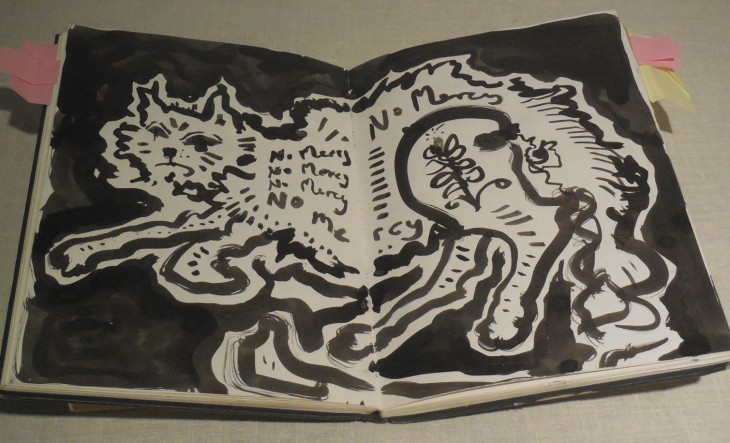It would have to rank as one of the weirder birthday presents, but when the city of Canberra turned 100, in 2013, we got a set of boulders, one from each state and territory in the Commonwealth of Australia. They are collectively known as the Federation Rocks. We stumbled across this place when we followed a small stub of a road to see what was there.
Each boulder, with the exception of the ironstone from WA, has a small ‘window’ where the surface has been polished so you can enjoy the beauty of these rocks. They also have a descriptive plaque attached to them, hence the odd rectangle in the painting below.

Queensland’s contribution, a limestone boulder from Chinaman Creek, studded with marine fossils, 23 December 2015, graphite and watercolour
While the Chinaman Creek boulder from Queensland is the most dramatic of these boulders, I do enjoy the way they have been placed in a graceful arc.

From foreground to the rear, Chinaman Creek limestone (Queensland); My Goyder Syenite (Northern Territory); and Canberra Limestone, (Australian Capital Territory). 23 December 2015, graphite and watercolour
The ironstone boulder from Western Australia is the oldest in the collection coming in at nearly 2.5 million years old. The colours in it are so beautiful.

Brockman Formation ironstone, 2490-2450 million years old. Now that’s ageing gracefully!
At present these boulders grace a turning circle and small parking area which appears to be home to every spare road sign in Canberra. While I was drawing the boulders one of my sketching companions had lots of fun capturing the absurdity that is that turning circle.
There are plans for greater usage of this area. It is to be the entry point to the National Rock Garden, a relative to the National Arboretum which is located up the hill from this area. If you like quirky tourist destinations then I suggest you give this one a go.
The Federation Rocks are located at the corner of Lady Denman Drive and Barrenjoey Drive, (close to the National Arboretum), just drive the two hundred metres to the end of Barrenjoey Drive to find them.







